USIT Manual
USIT (Unified Structured Inventive Thinking):
A Concise Process of Creative Problem Solving in the 'Six-Box Scheme'
First Edition (in Japanese, Feb. 9, 2014)
2nd Edition (in Japanese, May 21, 2015) (in English, Jun. 14, 2015)
USIT Manual |
|
|
|
| Toru Nakagawa (Osaka Gakuin University, Professor Emeritus) | |
|
|
| Posted: Jun. 26, 2015. |
For going back to Japanese pages, press buttons.
Editor's Note (Toru Nakagawa, Jun. 20, 2015)
I have just prepared the 2nd Edition of the USIT Manual in English. USIT Manual was first written in Feb. 2014 in Japanese, and was revised and extended in May 2015 in the form of 2nd Edition in Japanese, and is now translated into English. The concepts and detailed processes of USIT are described in the USIT Manual along the steps in USIT.
USIT ('Unified Structured Inventive Thinking') was originally developed by Dr. Ed Sickafus in 1995. And it has been further extended by Toru Nakagawa et al. in Japan since 1999. We integrated TRIZ and USIT into USIT, and recognized the 'Six-Box Scheme' (of USIT) as a New Paradigm of Creative Problem Solving in general; and hence made USIT a much more general and universal method.
'The General Methodology of Creative Problem Solving (CrePS)' is characterized by its basic paradigm of 'Six-Box Scheme'. With the paradigm, we have been able to integrate, reorganize, and unify a large variety of methods including TRIZ and USIT.
USIT in the current stage is regarded as a concise, consistent, unified, whole process for performing the creative problem solving in the 'Six-Box Scheme'.
I am now posting the USIT Manual in the form of HTML + images for the sake of easier access and linking convenience, and also in PDF for the purpose of clarity.
| Top of this page | USIT Documents (Parent page) |
USIT Manual (Table of Contents) | USIT Manual (HTML) |
USIT Operator System (Index) | USIT Operator System (Full version) |
From TRIZ Tools to USIT Operators (Index) |
USIT Case Studies (Parent page) |
USIT References | USIT Documents (Parent page)(Japanese) |
Japanese page |
USIT Manual
USIT (Unified Structured Inventive Thinking):
A Concise Process of Creative Problem Solving in the 'Six-Box Scheme'Preface:
Purposes, Targets, and MeansIntroduction:
Purposes to learn and apply USIT; What is USIT?;
Characteristic features of USIT; How to use USITOverall View of the USIT Process:
'Six-Box Scheme'; Description of the 'Six-Box Scheme'Execution steps of the USIT process:
Step 1: Define the Problem:
(1) Preparation: Forming the USIT project;
(2) Clarify the problem situations and focus the scope(A) Understand the present system:
(1) Understand the space characteristics;
(2) Understand the time characteristics;
(3) Understand the attributes;
(4) Understand the functional relationships(B) Make an image of the ideal system :
(1) Particles method (part 1 and part 2)Step 3: Generate ideas:
(1) Write down the ideas stimulated by the analyses;
(2) Extend ideas with USIT operatorsStep 4: Construct solutions:
(1) Evaluate and select ideas;
(2) Construct the conceptual solutions;
(3) Report the results of the USIT projectStep 5: Implement the solutions: (Real activities in the 'Real World') ;
USIT Case Studies: About the Collection of USIT Case Studies
Appendix 1. The System of USIT Operators
Appendix 2. A Collection of USIT Case Studies
USIT Manual
USIT (Unified Structured Inventive Thinking):
A Concise Process of Creative Problem Solving in the 'Six-Box Scheme'HTML + Images Page (Posted: Jun. 26, 2015)
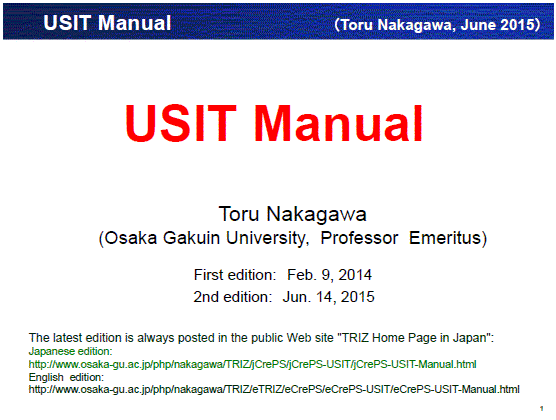
Preface:
Purposes, Targets, and Means
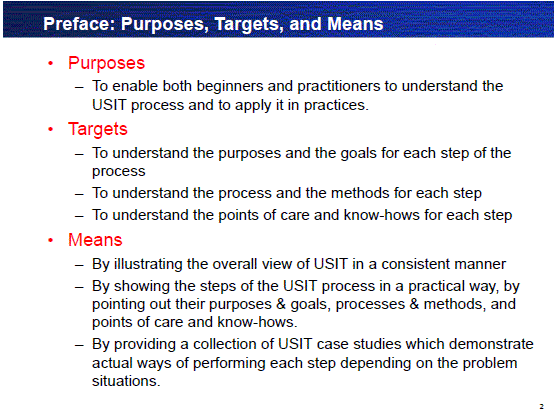
Table of Contents:
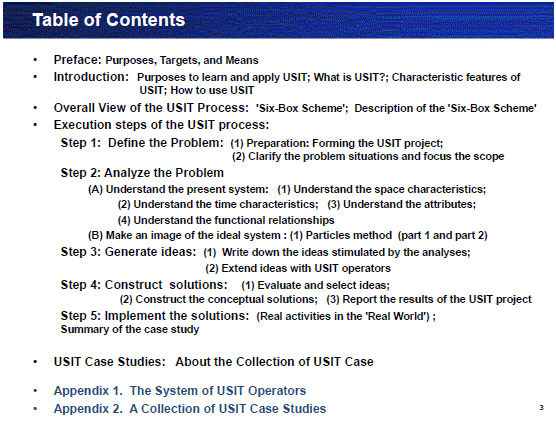
Introduction:
Purposes to learn and apply USIT;
What is USIT?;
Characteristic features of USIT;
How to use USIT
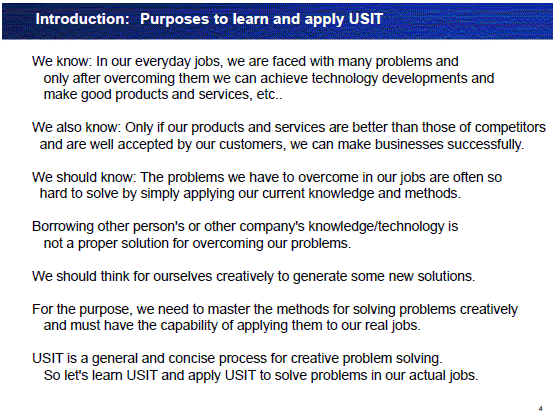
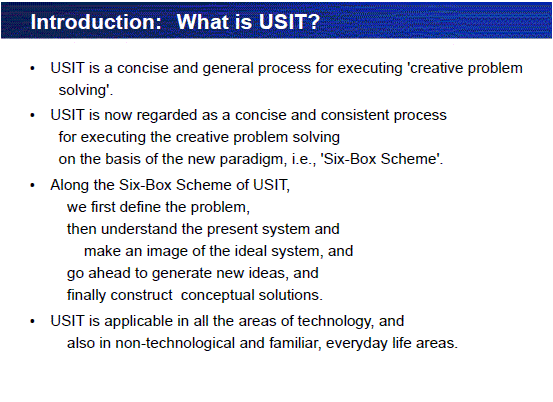
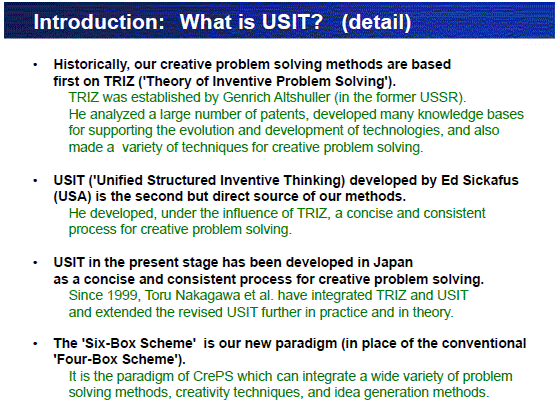
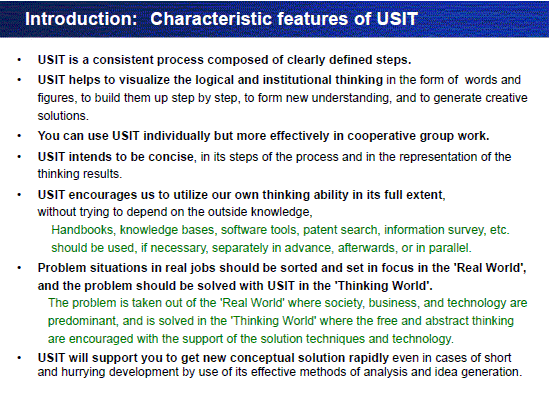
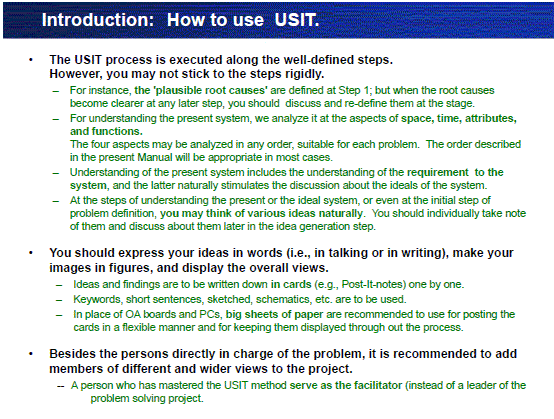
Overall View of the USIT Process:
'Six-Box Scheme';
Description of the 'Six-Box Scheme'
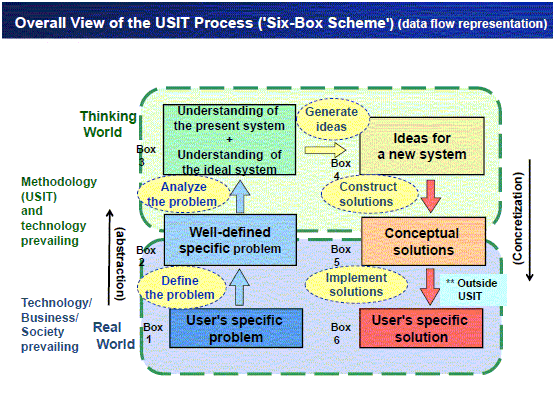
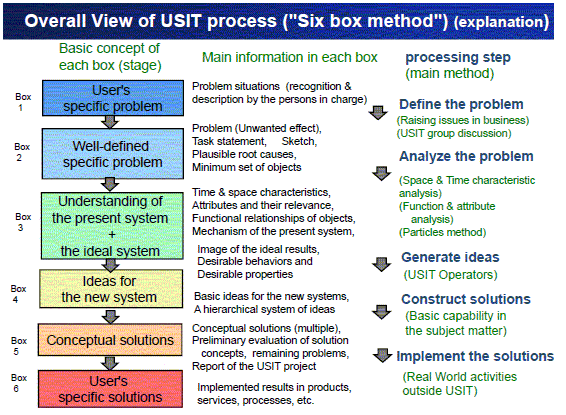
Execution steps of the USIT process:
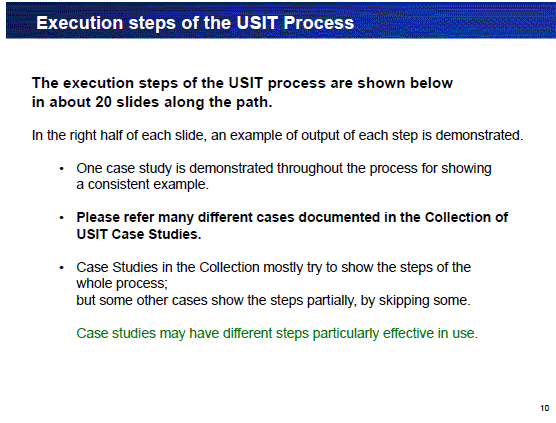
Step 1: Define the Problem:
(1) Preparation: Forming the USIT project;
(2) Clarify the problem situations and focus the scope
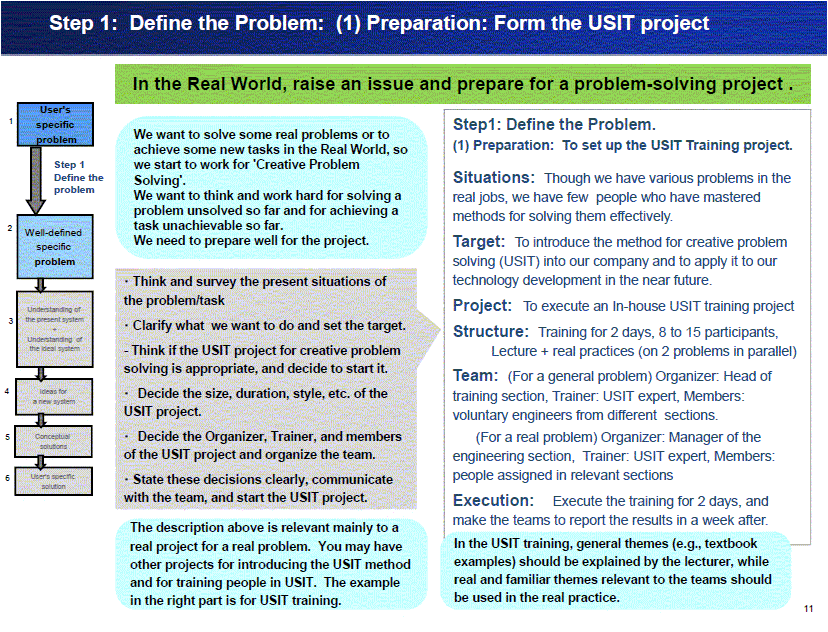
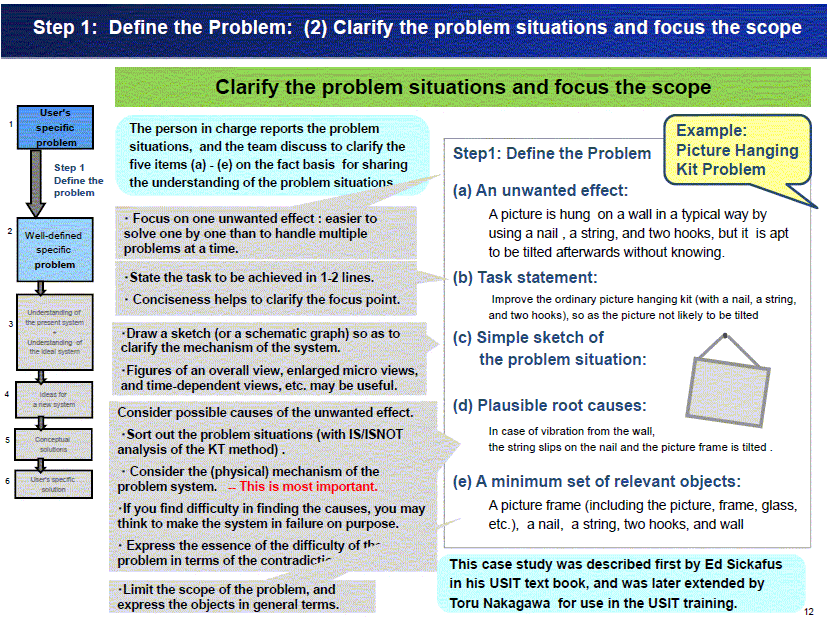
Step 2: Analyze the Problem
(A) Understand the present system:
(1) Understand the space characteristics;
(2) Understand the time characteristics;
(3) Understand the attributes;
(4) Understand the functional relationships
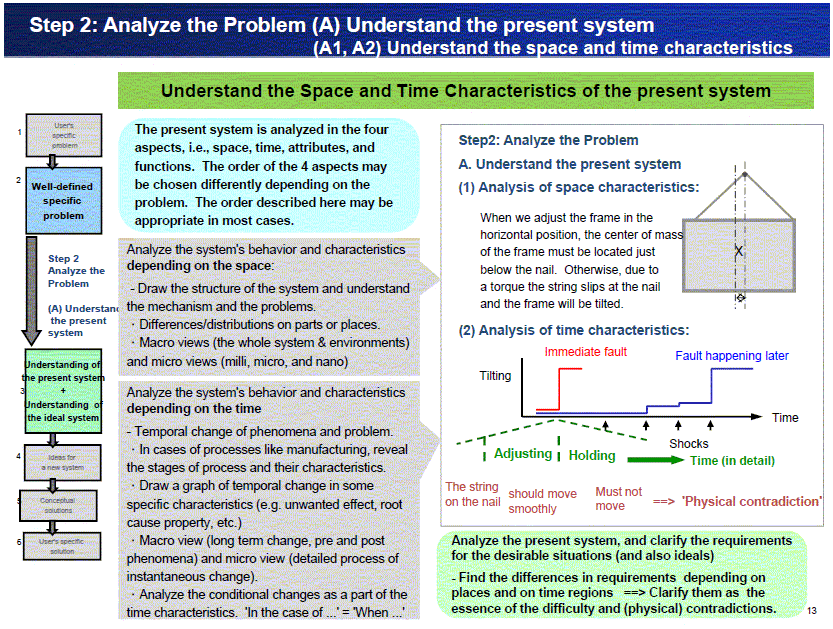
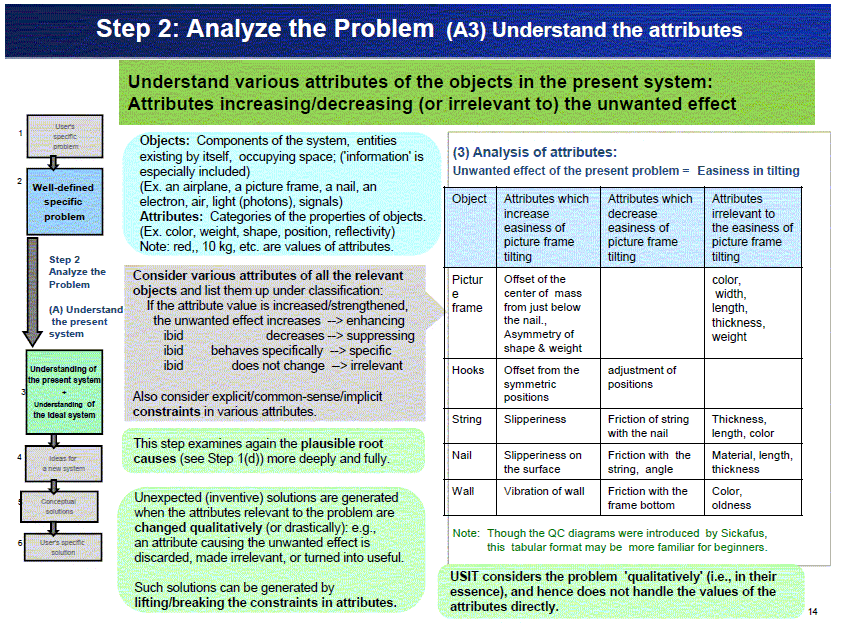
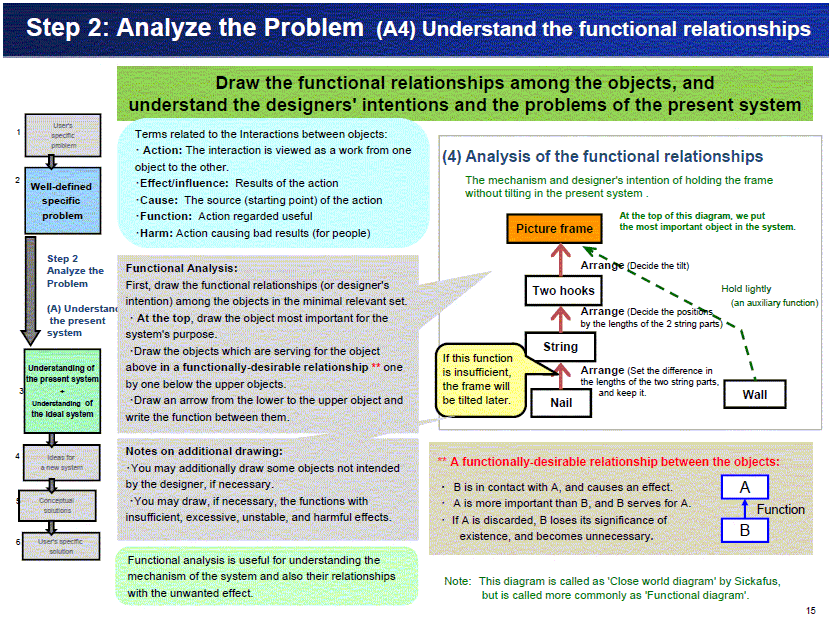
(B) Make an image of the ideal system :
(1) Particles method (part 1 and part 2)
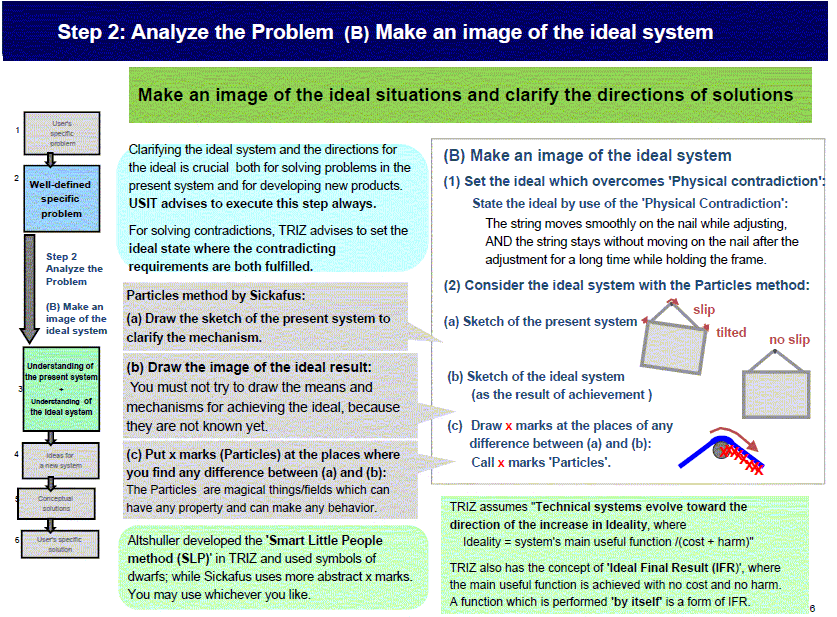
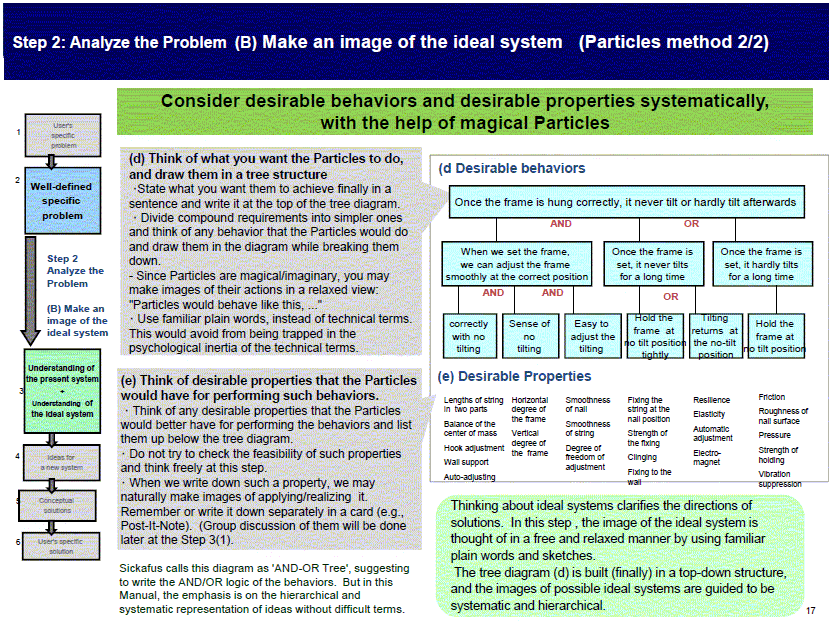
Step 3: Generate ideas:
(1) Write down the ideas stimulated by the analyses;
(2) Extend ideas with USIT operators
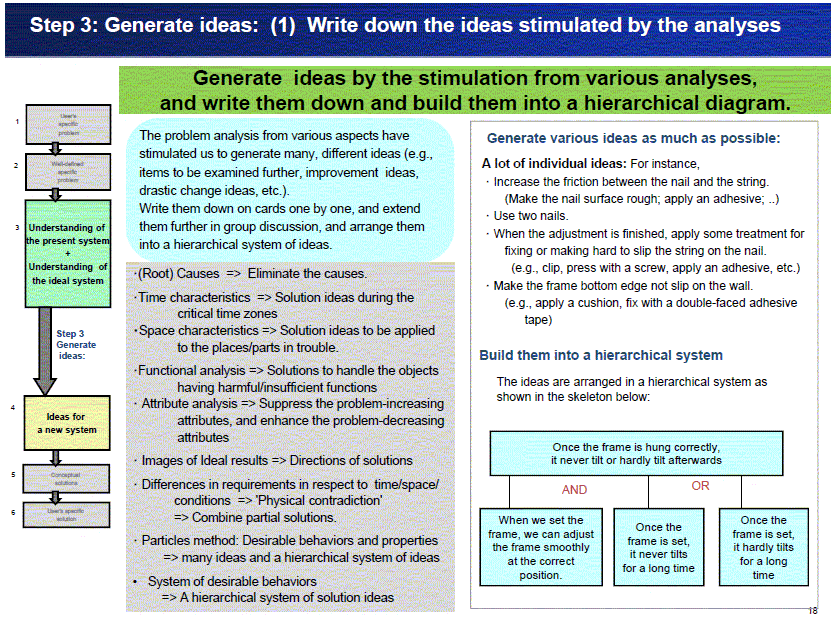
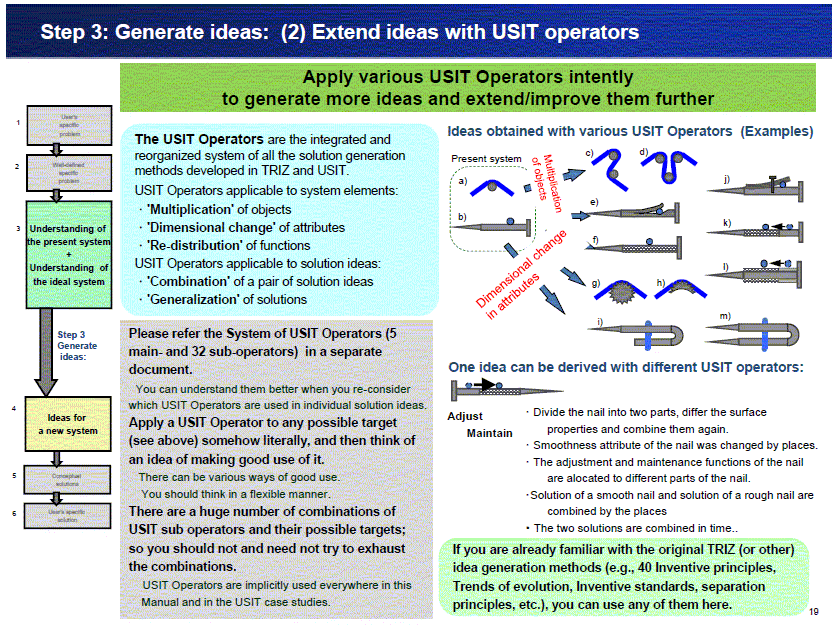
Step 4: Construct solutions:
(1) Evaluate and select ideas;
(2) Construct the conceptual solutions;
(3) Report the results of the USIT project
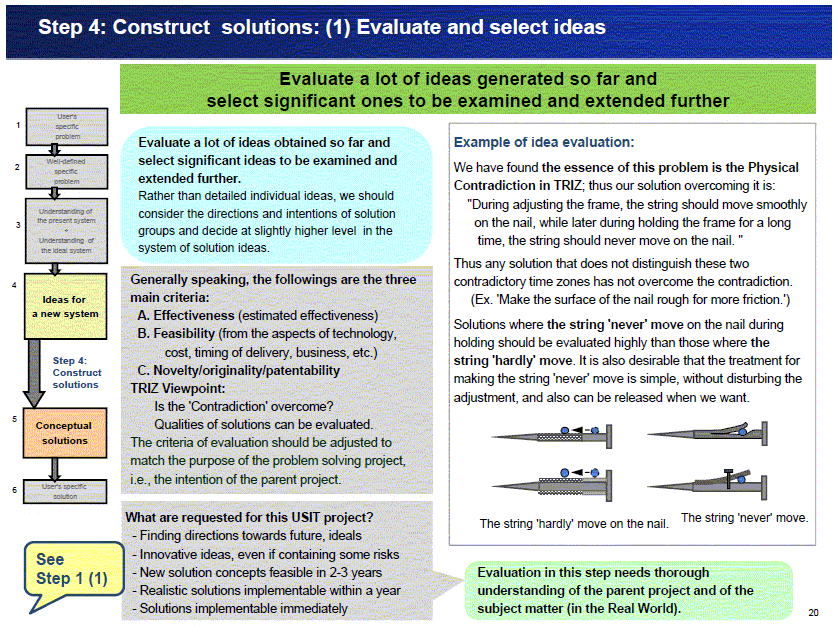
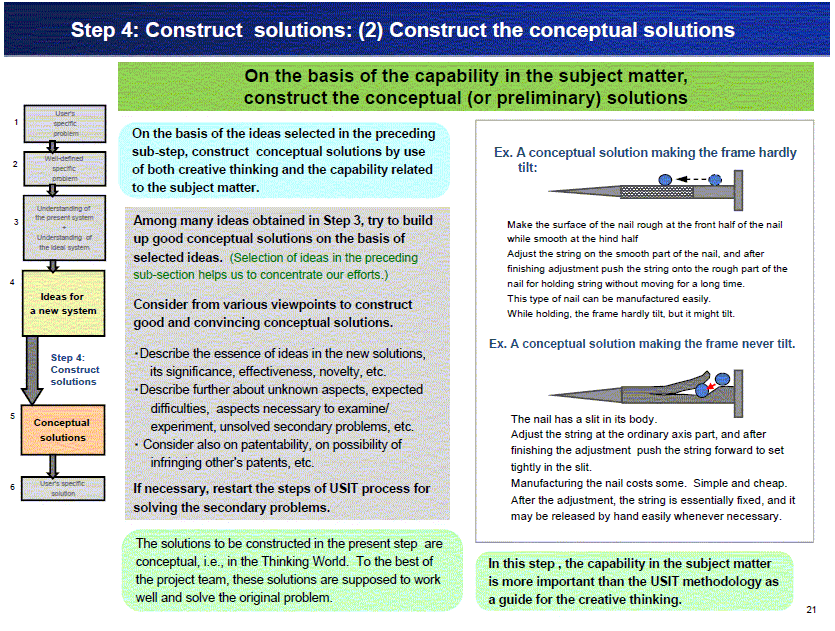
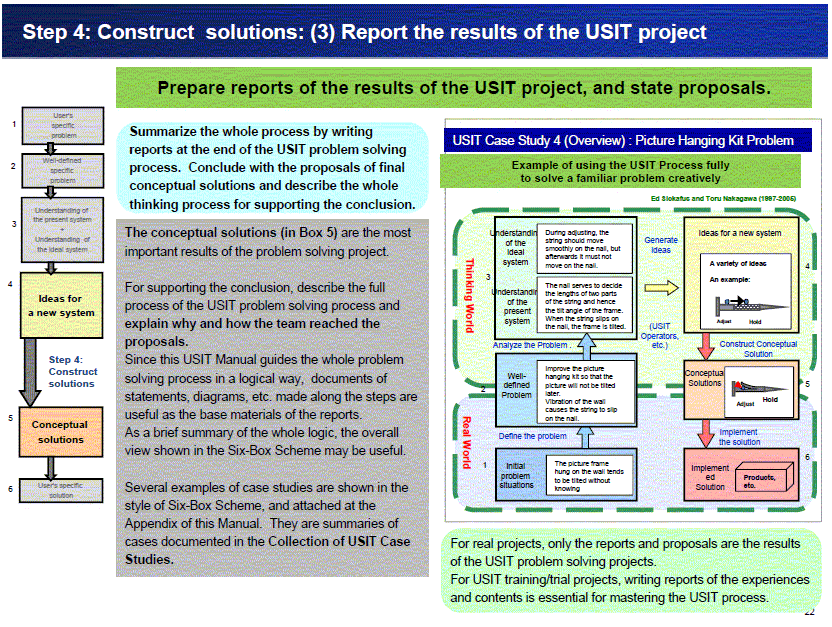
Step 5: Implement the solutions: (Real activities in the 'Real World') ;
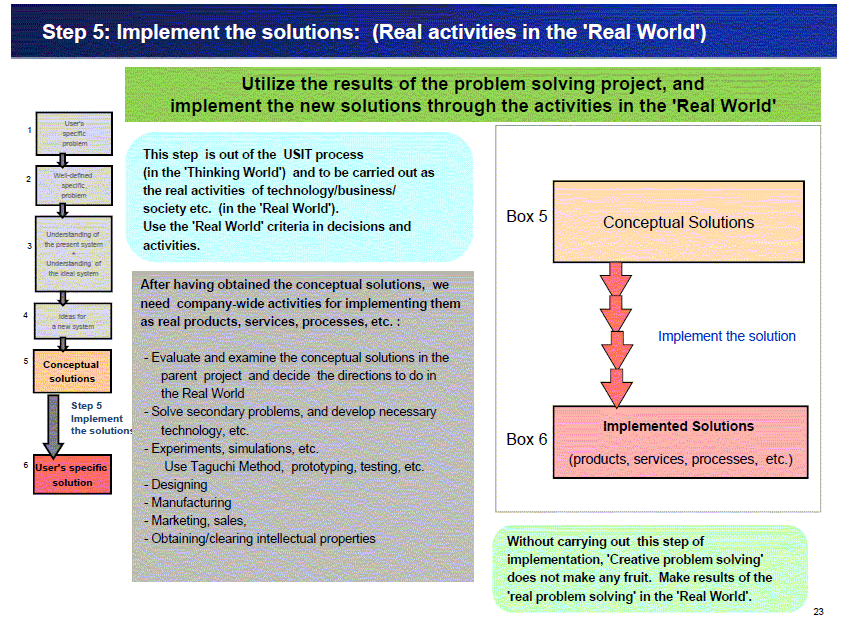
Summary of the case study
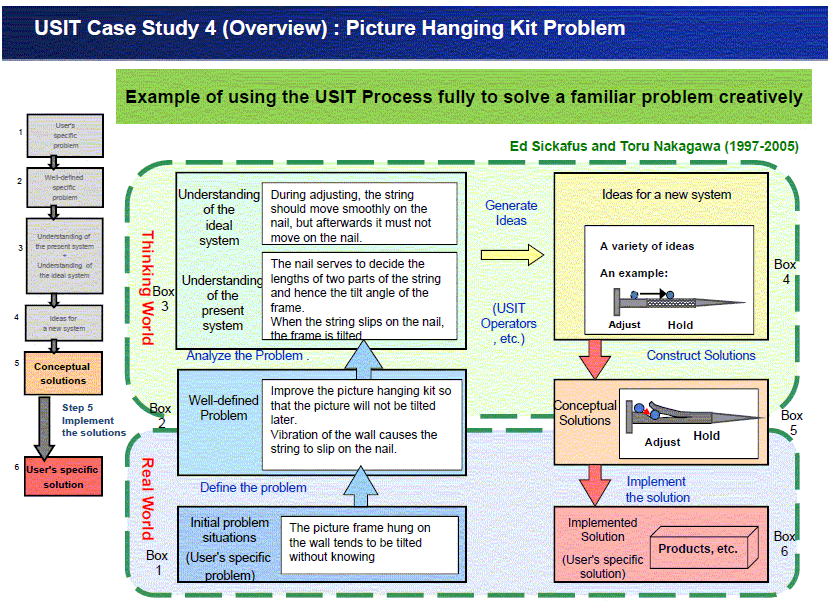
USIT Case Studies: About the Collection of USIT Case Studies
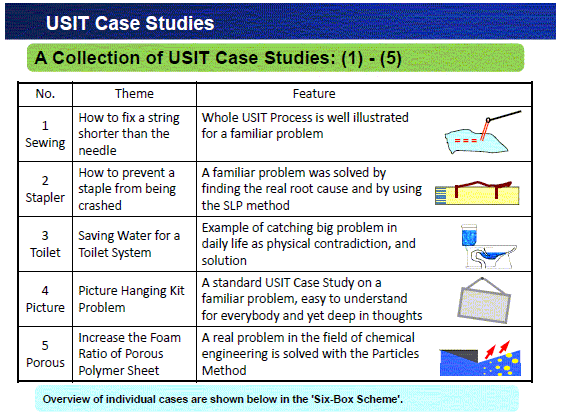
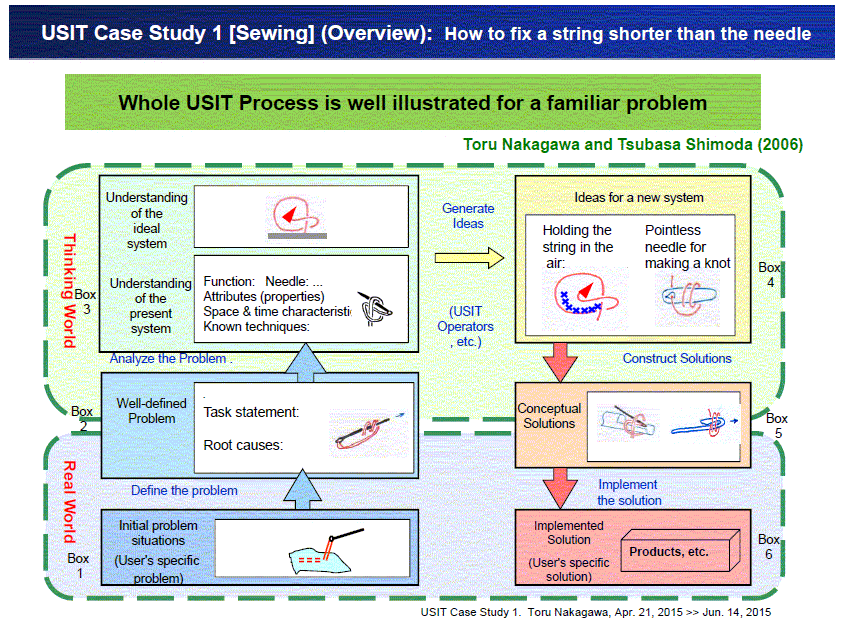
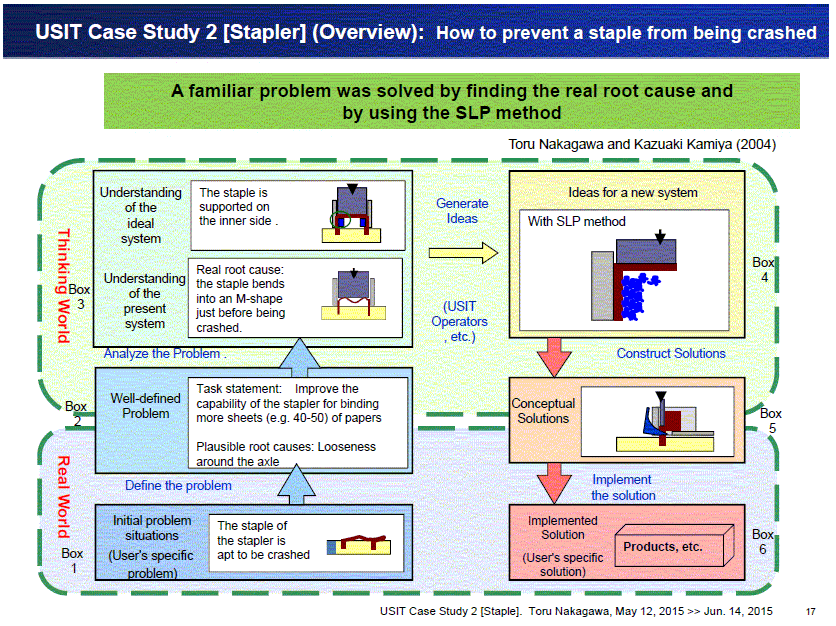
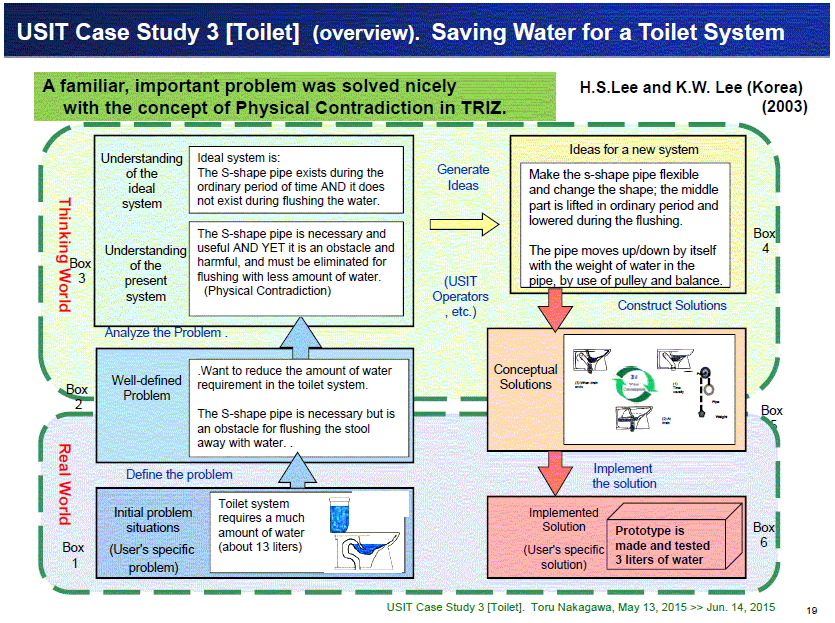
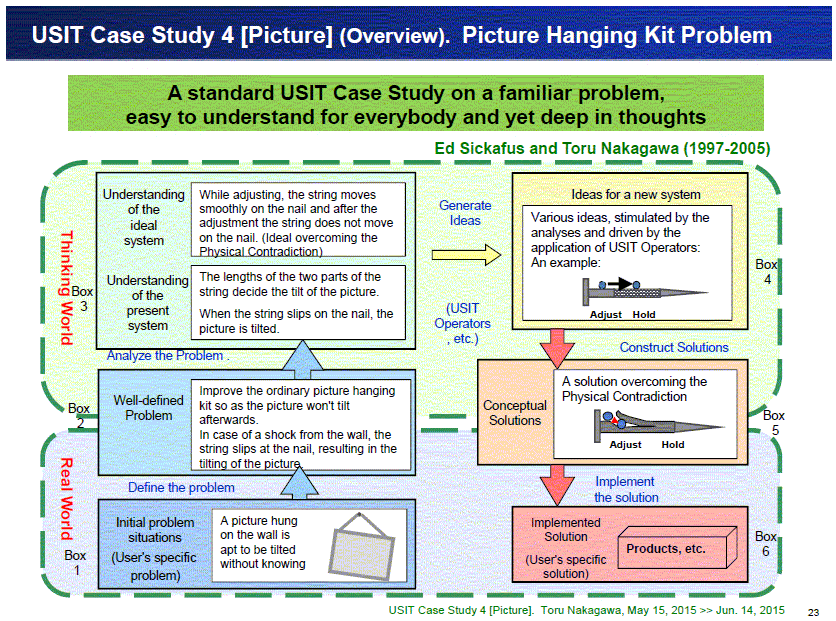
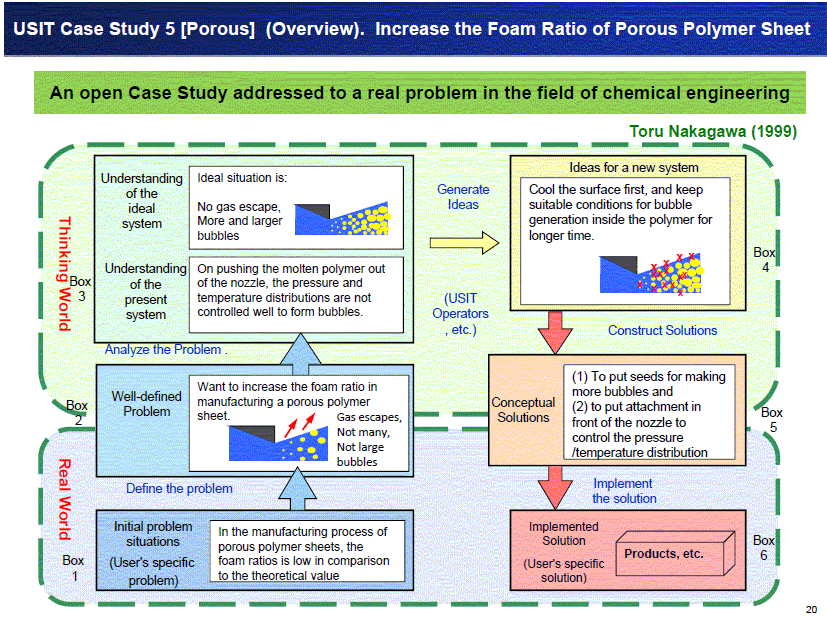
Appendix 1. The System of USIT Operators ==> See: Index ; Main page
Appendix 2. A Collection of USIT Case Studies ==> See: Index ; Main page
USIT Manual: English edition: HTML page (The present page), PDF
Japanese edition: HTML page , PDF
USIT Documents
| Index in the USIT Documents page | Main HTML page | supporting pages | |
| USIT Documents (Index) | page top |
USIT Documents |
|
| USIT Manual | Manual (index) |
USIT Manual |
USIT Manual in PDF |
| USIT Operators | Operators (index) |
USIT Opertors (Full version) |
|
| USIT Case Studies | Case Studies (index) |
A Collection of USIT Case Studies (parent page) |
Individual Case Study pages in HTML (ex. Case 1: |
| USIT References | References (index) |
-- |
| Top of this page | USIT Documents (Parent page) |
USIT Manual (Table of Contents) | USIT Manual (HTML) |
USIT Operator System (Index) | USIT Operator System (Full version) |
From TRIZ Tools to USIT Operators (Index) |
USIT Case Studies (Parent page) |
USIT References | USIT Documents (Parent page)(Japanese) |
Japanese page |
Last updated on Jun. 26, 2015. Access point: Editor: nakagawa@ogu.ac.jp